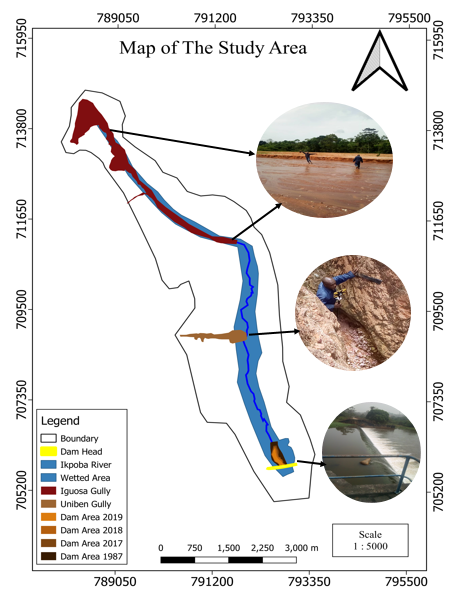Evaluation of ANFIS Predictive Ability Using Computed Sediment from Gullies and Dam
Keywords:
ANFIS, Gully Erosion, Ikpoba Dam, SedimentationAbstract
The study proposed an Adaptive Neuro-Fuzzy Inference Systems (ANFIS) model capable of predicting sediment deposited in a dam and sediment loss-in-transit (SLIT) using the potential of a formulated mathematical relation. The input parameters consist of five members viz: the rainfall, the slope, the particle size, the velocity, and the computed total volume of sediment exited from two prominent gullies for 2017, 2018, and 2019. The outputs are the total volume of sediment deposited at the adjoining Ikpoba dam for 2017, 2018, and 2019, respectively. The Ordinary Least Square (OLS) regression model on sediment volume retained all covariates with p<0.05, explaining 93.8% of the variability in the dataset. The multicollinearity effect on the dataset was assessed using the Variance Inflation Factor (VIF) which was found not to pose a problem for (VIF<5). The model was validated using the (MSE), the (MAE), and the correlation coefficient (r). The best prediction was obtained as: (RMSE = 0.0423; R2 = 0.947). The predicted volume of sediment was 842,895.8547m3 with an error of -0.3295344% and the predicted volume of SLIT was 57,787.98m3 which is an indication that ANFIS performs satisfactorily in predicting sediment volume for the gullies and the dam respectively

Published
How to Cite
Issue
Section
Copyright (c) 2023 Stephen Olushola Oladosu, Alfred Sunday Alademomi , James Bolarinwa Olaleye, Joseph Olalekan Olusina, Tosin Julius Salami

This work is licensed under a Creative Commons Attribution 4.0 International License.







